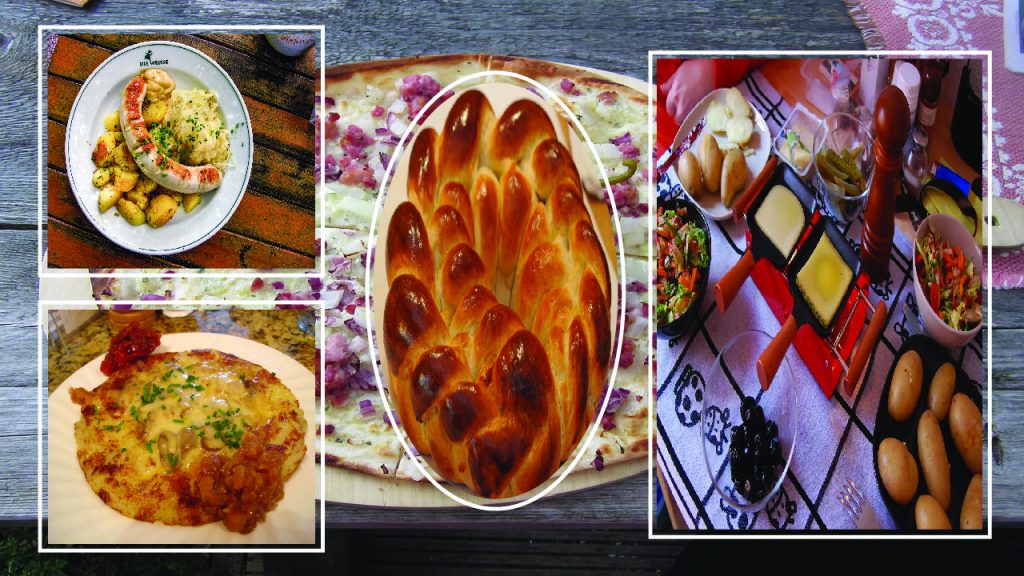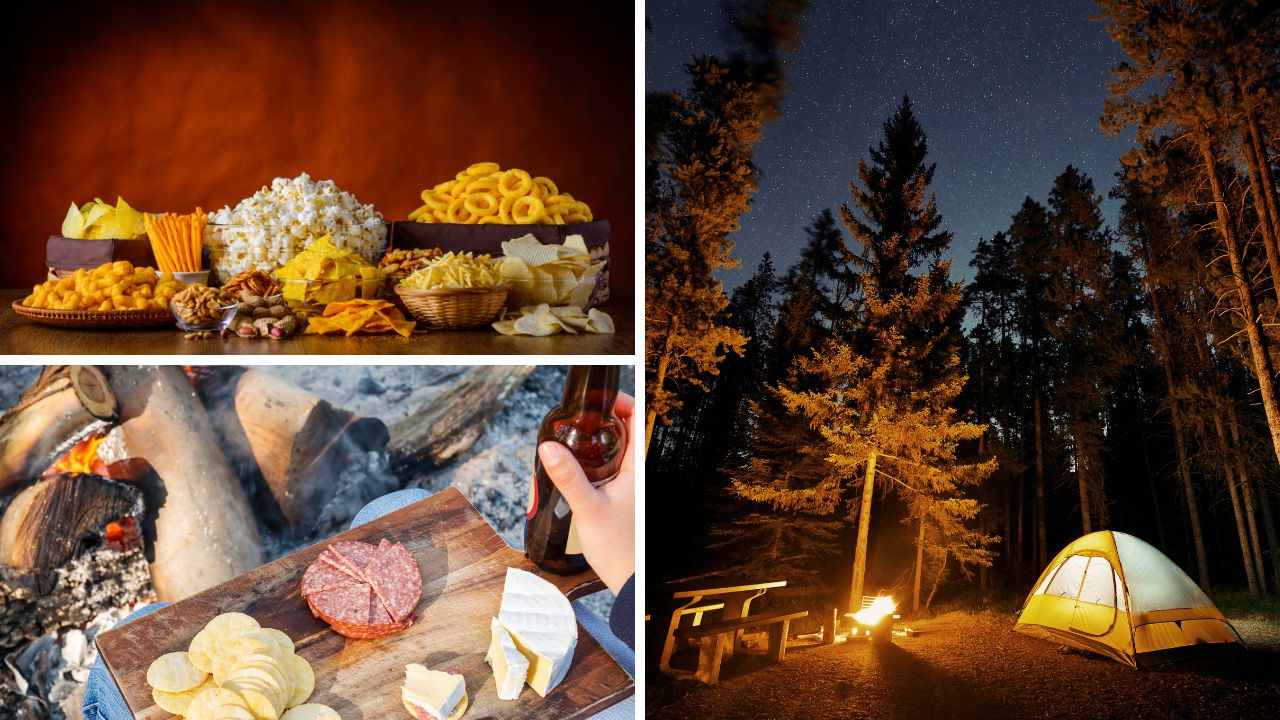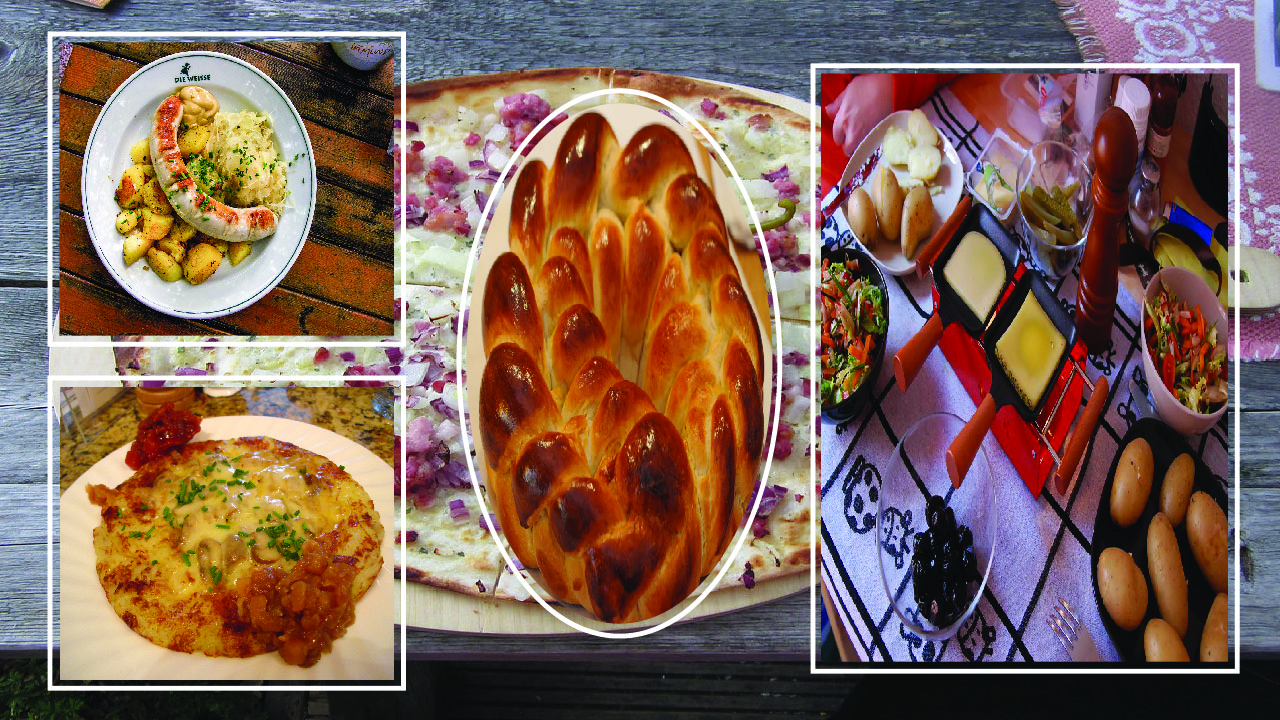Switzerland, a country renowned for its stunning Alpine landscapes, pristine lakes, and world-class chocolate, is also home to a vibrant and diverse street food scene. While Swiss cuisine might not be as internationally famous as its Italian or French neighbors, the country’s street food offers a delicious glimpse into its culinary heritage and modern food trends.
From traditional cheese-based dishes to international influences and modern twists on classic recipes, Swiss street food is a delightful mix of flavors and textures. In this article, we’ll explore the top 15 best street food in Switzerland which you can find, diving into their history, ingredients, and where you can try them.
Whether you’re planning a trip to Switzerland or simply curious about its culinary offerings, this guide will take you on a mouthwatering journey through the streets of Zurich, Geneva, Bern, and beyond. So, let’s dive into the world of Swiss street food and discover what makes it unique and irresistible.
1. Raclette
Raclette is perhaps one of the most iconic Swiss street foods, beloved for its simplicity and rich, comforting flavor.
Key Features:
- Origin: Valais canton, in southwestern Switzerland.
- Main ingredient: Raclette cheese.
- Typical servings include melted cheese scraped onto potatoes, pickled onions, and grated cheese.
The French word “racler,” which means “to scrape,” describes the traditional preparation of Raclette. The diner heats a large wheel of Raclette cheese, either over a fire or using a special Raclette grill, and scrapes the melted surface onto their plate.
Often enjoyed as a sit-down meal, especially in winter, Raclette has made its way onto the streets in a more portable form. At food markets and festivals across Switzerland, you can find Raclette stands where vendors melt individual portions of cheese and serve them over boiled potatoes or crusty bread.
Cow’s milk produces the semi-hard texture of Raclette cheese. It’s known for its excellent melting properties and nutty, slightly sweet flavor that intensifies when heated.
Raclette is typically accompanied by:
- Boiled or steamed small potatoes.
- Pickled pearl onions.
- Gherkins (small pickled cucumbers).
- Sometimes, dried meats such as prosciutto or bresaola are consumed.
This combination of melted cheese, starchy potatoes, and tangy pickles creates a perfect balance of flavors and textures that has made Raclette a favorite among locals and tourists alike.
2. Bratwurst
The bratwurst is a type of sausage that’s hugely popular as street food throughout Switzerland.
Key Features:
- Origin: While sausages are common throughout Europe, the Swiss have their own unique varieties.
- Main ingredient: pork, sometimes veal.
- Typical serving: Grilled and served on a roll with mustard.
Swiss Bratwurst comes in several regional varieties, each with its own unique characteristics:
- St. Galler Bratwurst: Made from pork and veal and flavored with milk and spices, this sausage hails from the city of St. Gallen.
- The Olma Bratwurst is a larger version of the St. Galler, traditionally served without mustard.
- Thurgauer Bratwurst: Made in Thurgau canton with a higher proportion of pork.
Bratwurst stands are a common sight in Swiss cities and towns, especially during festivals and markets. Typically, they grill the sausages to order, resulting in a crispy exterior and juicy interior.
The “Cervelat Prominenz,” a unique Swiss tradition, honors important people by creating a portrait of them using sliced Cervelat sausages. While not strictly a Bratwurst, this tradition shows the importance of sausages in Swiss culture.
Bratwurst is frequently served.
- In a crusty roll (known as a “Bürli” in some regions).
- Serve with mustard on the side, excluding the Olma Bratwurst.
- Sometimes with onions or sauerkraut.
The simplicity of a well-made bratwurst, combined with its satisfying flavor and texture, makes it a perennial favorite among Swiss street food enthusiasts.
3. Rösti
Rösti is a classic Swiss dish that has found its way onto the street food scene, offering a delicious and filling option for food on the go.
Key Features:
- Origin: Believed to have originated in Bern, it is now considered a national dish.
- Main ingredient: potatoes.
- Typical serving: crispy potato cake, sometimes topped with cheese or a fried egg
Rösti was originally a farmers’s breakfast in the canton of Bern, but it has since spread throughout Switzerland and beyond. Essentially, it’s a flat, round cake of grated potatoes, fried until golden and crispy on the outside and soft on the inside.
Street vendors often serve Rösti in paper cones or cardboard boxes, making it convenient to consume while strolling. Some vendors have even created “Rösti burgers,” where the potato cake serves as the bun for various fillings.
The basic recipe for Rösti is simple:
- Parboiled potatoes, grated.
- Form into a cake shape.
- Fry in butter or oil until crispy.
However, there are many variations:
- By adding cheese, you can create a dish that is similar to hash browns.
- Mixing in onions or bacon for extra flavor.
- Add a fried egg or smoked salmon as a topping.
Rösti showcases the Swiss talent for turning simple ingredients into something truly delicious. Its crispy texture and comforting potato flavor make it a satisfying street food option, especially on cold days.
4. Fondue
While traditionally enjoyed as a sit-down meal, creative Swiss food vendors have found ways to make fondue portable, bringing this beloved dish to the streets.
Key Features:
- Origin: Various regions of Switzerland claim to have invented fondue.
- Main ingredient: cheese (typically Gruyère and Emmental).
- A typical serving is melted cheese with bread for dipping.
Fondue, which comes from the French word “fondre,” meaning “to melt,” is a dish of melted cheese served in a communal pot (caquelon) over a portable stove (réchaud). Using long, stemmed forks, diners dip bread into cheese.
Street food versions of fondue typically take the following form:
- A hollowed-out loaf of bread serves as the vessel for the cheese in a fondue.
- Fondue cups: Individual portions served in disposable cups, with bread on the side.
- Fondue-filled pastries: similar to a cheese-filled croissant.
The typical cheese mixture used for fondue includes:
- Gruyère: For flavor.
- Emmental: For meltability.
- White wine: To help with consistency.
- Kirsch (cherry brandy): For additional flavor.
- Garlic was rubbed on the inside of the pot.
Fondue represents the communal aspect of Swiss dining, even in its street food form. It’s a warm, comforting dish that’s perfect for cold weather and social gatherings.
5. Älplermagronen (Alpine Macaroni)
Älplermagronen, also known as Alpine Macaroni, is a hearty dish that has been adapted for street food consumption.
Key Features:
- Origin: Swiss Alpine regions.
- Main ingredients: macaroni, potatoes, cheese, onions, and apple sauce.
- A typical serving is in a cardboard box or paper container with a spoon.
Älplermagronen was originally a filling meal for Swiss shepherds and farmers in the Alps. It combines simple, readily available ingredients into a satisfying and energy-rich dish.
The street food version typically includes:
- Cooked macaroni pasta.
- Boiled potatoes cut into cubes.
- Melted cheese (often Gruyère).
- Caramelized onions.
- A side of apple sauce.
The container layers or mixes all these ingredients, making it convenient to eat on the go. The combination of cheese, pasta, and potatoes provides a filling base, while the sweet apple sauce offers a contrasting flavor that cuts through the richness of the dish.
Älplermagronen is a perfect example of how traditional Swiss comfort food has been adapted for modern street food consumption. Winter markets and ski resorts especially love it for its warming properties.
6. Zopf
Zopf is a type of Swiss bread that, while not traditionally considered street food, has found its way into the street food scene in various forms.
Key Features:
- Origin: Various regions of Switzerland.
- Main ingredients: flour, milk, eggs, butter, yeast.
- Typically, it’s served as a bread roll or as a base for other street foods.
Zopf, which means “braid” in German, is a soft white bread traditionally baked in a braided shape. People frequently consume it on Sunday mornings, sometimes referring to it as “Sunday bread.”
In the context of street food, Zopf appears in several ways:
- Freshly baked rolls are sold at bakery food trucks.
- Serve as a base for sandwiches and burgers at food stalls.
- You can enjoy it as a sweet snack with chocolate chips or raisins.
Butter and milk enrich the dough for Zopf, giving it a soft texture and rich flavor. The braided shape not only makes it visually appealing but also creates a pleasing contrast between the softer interior and the slightly crustier exterior.
Some food vendors have created fusion dishes using Zopf.
- Zopf French toast.
- Zopf bread pudding.
- Savory-stuffed Zopf with cheese and herbs.
Zopf embodies the adaptability of Swiss baking traditions for contemporary street food consumption.
7. Bircher Muesli
Bircher Muesli, while originally created as a health food, has found its way onto the Swiss street food scene as a quick and nutritious breakfast or snack option.
Key Features:
- Origin: Created by Swiss physician Maximilian Bircher-Benner in the early 1900s.
- Main ingredients: oats, fruits, nuts, yogurt or milk.
- A typical serving is in a cup or small container with a spoon.
Patients at Bircher-Benner’s sanatorium in Zurich developed Bircher Muesli as part of a healthy diet. The original recipe involved soaking oats overnight with grated apple, lemon juice, and condensed milk.
Modern street food versions of Bircher Muesli typically include:
- Rolled oats (sometimes pre-soaked).
- Grated or chopped fresh fruits (apple, berries, banana).
- Yogurt or plant-based milk.
- Eat nuts and seeds, such as almonds, hazelnuts, and sunflower seeds.
- At times, we use honey or maple syrup to enhance the sweetness.
Food trucks and market stalls often offer Bircher Muesli in ready-to-eat portions, making it a convenient and healthy option for people on the go. Some vendors create seasonal variations, using local fruits that are in season.
Bircher Muesli represents a healthier side of Swiss street food, offering a balance of carbohydrates, proteins, and healthy fats. Its popularity reflects a growing trend towards healthier food options, even in the street food scene.
8. Flammkuchen (Tarte Flambée)
Flammkuchen, also known as tarte flambée, is a dish that originated in the Alsace region bordering Switzerland and has become popular in Swiss street food markets.
Key Features:
- Origin: Alsace region (France/Germany border), popular in Swiss-German areas.
- Main ingredients: thin bread dough, crème fraîche, onions, and bacon.
- Typical serving: cut into rectangular slices, served on a paper plate.
Flammkuchen translates to “flame cake” in German, referring to the traditional method of cooking it in a wood-fired oven. The dish is similar to a very thin-crust pizza but with some key differences.
The basic Flammkuchen consists of:
- A paper-thin bread dough base.
- A layer of crème fraîche or fromage blanc.
- Thinly sliced onions.
- Small pieces of bacon (lardons).
Street food vendors often cook flammkuchen in portable ovens at markets and festivals. The high heat creates a crispy crust and slightly charred edges, which are part of its appeal.
There are several variations of Flammkuchen available in Swiss street food markets.
- Vegetarian versions featuring mushrooms or bell peppers are available.
- Cheese versions are often made using local Swiss cheeses.
- Sweet versions with apples and cinnamon.
Typically, people cut flammkuchen into rectangular pieces, which makes it convenient to consume while strolling around. Its combination of crispy crust, creamy topping, and savory toppings makes it a satisfying street food option.
9. Cordon Bleu
While Cordon Bleu is traditionally a sit-down restaurant dish, Swiss street food vendors have adapted it into a portable format.
Key Features:
- Origin: Switzerland (despite its French name).
- Main ingredients: breaded meat (usually veal or pork) stuffed with cheese and ham.
- Typical serving: in a bread roll or on its own with a side of fries.
Cordon Bleu, meaning “blue ribbon” in French, is a Swiss invention that has become popular worldwide. Street food often serves Cordon Bleu as a sandwich or in bite-sized pieces.
The typical Cordon Bleu consists of:
- A thin slice of meat (traditionally veal, but often pork in street food versions).
- Eat a slice of cheese, usually Emmental or Gruyère.
- A slice of ham.
- Breaded and fried until golden.
The street food adaptations of Cordon Bleu are as follows:
- In Cordon Bleu sandwiches, a crusty roll holds the fried cutlet.
- Cordon Bleu bites: smaller, bite-sized versions served with dipping sauces.
- Cordon Bleu wraps: We slice the cutlet and serve it in a wrap with salad.
The combination of crispy breading, melted cheese, and savory meat makes Cordon Bleu a satisfying street food option. It’s especially popular at festivals and sporting events.
10. Rivella
While not a food item, Rivella is a uniquely Swiss soft drink that’s often found alongside street food and deserves a mention in any discussion of Swiss street cuisine.
Key Features:
- Origin: It was invented in Switzerland in 1952.
- Main ingredient: milk whey.
- Typical servings are in cans or bottles, often at street food stalls.
Milk whey, herbs, and fruit essences combine to create Rivella, a carbonated soft drink. Despite its dairy by-product origin, Rivella’s taste and appearance are not milky. Instead, it has a unique, slightly fruity flavor that’s distinctively Swiss.
The drink comes in several varieties:
- Rivella Red: The original flavor.
- Rivella Blue: A low-calorie version.
- Rivella Green: Made with green tea extract.
- Rivella Yellow: A non-carbonated version.
Street food markets and festivals often sell Rivella, which serves as a refreshing accompaniment to many of the rich and savory foods available. Its unique flavor and Swiss heritage make it a popular choice among locals and tourists alike.
The drink’s use of milk whey, a by-product of cheese production, reflects Switzerland’s dairy industry heritage and commitment to sustainability.
11. Vermicelles
Vermicelles is a unique Swiss dessert that has found its way onto the street food scene, especially during autumn and winter.
Key Features:
- Origin: Swiss-German regions.
- Main ingredient: chestnut puree.
- Typical serving: in a cup or cone, often topped with whipped cream.
The Italian word for “little worms,” which describes the stringy appearance of the chestnut puree after it passes through a special press, gives Vermicelles its name.
The dessert is made by:
- Chestnuts are cooked and pureed.
- Adding sugar and flavoring (often kirsch).
- Pressing the mixture into spaghetti-like strands using a special Noodle Press.
People commonly serve Vermicelles as street food:
People commonly serve Vermicelles as street food:
- Store in a paper cup or cone for convenient on-the-go eating.
- Topped with whipped cream.
- Sometimes served with a meringue or vanilla ice cream base.
- Occasionally, garnish with chocolate shavings or crumbled meringue.
Vermicelles are particularly popular during the autumn months, when fresh chestnuts are in season. Its unique texture and subtly sweet, nutty flavor make it a favorite among Swiss dessert lovers.
This dessert showcases the Swiss talent for creating delightful treats from simple, local ingredients. The transformation of chestnuts into this whimsical, spaghetti-like dessert is a testament to Swiss culinary creativity.
12. Gipfeli (Swiss Croissant)
While croissants are often associated with France, the Swiss version, known as Gipfeli, is a staple of Swiss bakeries and street food markets.
Key Features:
- Origin: Swiss-German regions, influenced by the Austrian Kipferl.
- Main ingredients: flour, butter, yeast.
- Typical servings: plain or filled, often sold at bakery stands or food trucks.
Gipfeli, which means “little tip” in Swiss German, referring to its crescent shape, is similar to a French croissant, but with some key differences:
- It’s often slightly sweeter.
- The texture is usually a bit denser and less flaky.
- It’s typically smaller in size.
Street food vendors frequently sell Gipfeli.
- Fresh from mobile bakery stands at markets and train stations.
- Included in breakfast sets with coffee.
- In both sweet and savory variations.
Popular variations include:
- Plain butter Gipfeli.
- Whole wheat Gipfeli.
- Chocolate-filled Gipfeli.
- Ham and cheese-filled Gipfeli.
Gipfeli’s portability and versatility make them the perfect street food. You can enjoy them for breakfast or as a quick snack at any time of day.
13. Schweizer Wurst-Käse Salat (Swiss Sausage-Cheese Salad)
Swiss food stands and markets are popular for this hearty salad, which provides a satisfying meal that is easy to eat on the go.
Key Features:
- Origin: Various regions of Switzerland.
- Main ingredients: Cervelat sausage, cheese, onions, vinaigrette.
- A typical serving is in a disposable container with a fork.
The Schweizer Wurst-Käse Salat is a dish that combines simple yet flavorful ingredients.
- Sliced Cervelat sausage is a type of cooked sausage.
- Cubed or julienned Swiss cheese (often Emmental or Gruyère)
- Thinly sliced onions.
- tangy vinaigrette dressing.
Food stands typically prepare the salad fresh, mixing the ingredients to order. This ensures that the cheese and sausage maintain their texture, while the onions stay crisp.
Variations of the salad might include:
- Additional vegetables, such as cucumbers or tomatoes.
- Different types of sausages or cheese.
- Add the pickles or pickled vegetables.
This salad represents a lighter option in the Swiss street food scene while still providing a satisfying and protein-rich meal. It’s particularly popular in the summer months when people are looking for cooler food options.
14. Roasted Chestnuts (Heisse Marroni)
Roasted chestnuts, known as “Heisse Marroni” in Swiss German, are a beloved street food, especially during the colder months.
Key Features:
- Origin: Common throughout Switzerland and other parts of Europe.
- Main ingredient: chestnuts.
- Typical serving: in a paper cone or bag.
Roasted chestnut stands are a common sight in Swiss cities and towns from autumn through winter. The smell of roasting chestnuts is often associated with the holiday season and winter markets.
The preparation process for Heisse Marroni is straightforward:
- To keep chestnuts from exploding, score them with a knife.
- Often over an open flame, they roast in a special pan with holes.
- We regularly stir the chestnuts to ensure even roasting.
- Once done, they’re served hot in a paper cone or bag.
Eating roasted chestnuts is a bit of an art.
- Peel away the outer shell and inner skin.
- You can then eat the hot, soft interior.
- Some stands provide small knives to help with peeling.
Roasted chestnuts are not only delicious but also nutritious, providing a beneficial source of fiber, vitamins, and minerals. They’re a warming snack that’s perfect for cold days and outdoor events.
15. Zibelemärit Soup (Onion Soup)
Even though it’s not a year-round street food, Bern’s annual Zibelemärit (Onion Market) onion soup is a beloved seasonal treat that merits recognition.
Key Features:
- Origin: Bern, Switzerland.
- Main ingredients: onions, beef broth, cheese.
- Typical serving: in a bread bowl or disposable cup.
Bern hosts the Zibelemärit, a folk festival, on the fourth Monday of November. It features numerous stands selling onion-themed products, including a hearty onion soup.
Typically, the soup includes:
- Caramelized onions.
- Rich beef broth.
- A slice of bread or croissants.
- Melted cheese on top.
Street vendors at the Zibelemärit often serve the soup in hollowed-out bread bowls, making it simple to eat while walking around the market. The bread absorbs the soup, adding to the overall heartiness of the dish.
While this soup is specific to one event, it represents the way Swiss street food often ties into local traditions and seasonal events. The soup’s warming properties make it ideal for the cold November weather in which the Zibelemärit takes place.
Conclusion
Swiss street food offers a delightful journey through the country’s culinary landscape, showcasing both traditional favorites and modern innovations. From the cheesy indulgence of Raclette and Fondue to the hearty satisfaction of Bratwurst and Rösti, Swiss street food reflects the country’s love for rich, comforting flavors.
These street foods not only satisfy hunger but also offer a window into Swiss culture and traditions. From the use of local cheeses and sausages to the influence of neighboring cuisines, Swiss street food tells the story of a country at the crossroads of Europe.
What makes Swiss street food unique is its ability to turn simple, high-quality ingredients into satisfying and flavorful dishes. The emphasis on cheese, potatoes, and bread reflects the country’s agricultural heritage, while newer additions to the street food scene showcase Switzerland’s openness to culinary innovation.
As you explore Swiss cities and towns, keep an eye out for these delicious street food options. Whether you’re visiting a weekly market, a seasonal festival, or just strolling through a city center, these foods offer a tasty and convenient way to experience Swiss cuisine.
Keep in mind that the availability of these foods varies depending on the season and location of your visit. This seasonality is part of what makes Swiss street food special, reflecting the country’s connection to its agricultural rhythms and cultural calendar.
Enjoying Swiss street food is not just about satisfying hunger; it’s about participating in a long-standing culinary tradition, supporting local food artisans, and experiencing the flavors that have shaped Swiss cuisine over generations. So the next time you find yourself in Switzerland, be sure to skip the restaurant for a meal or two and indulge in the diverse and delicious world of Swiss street food.
























